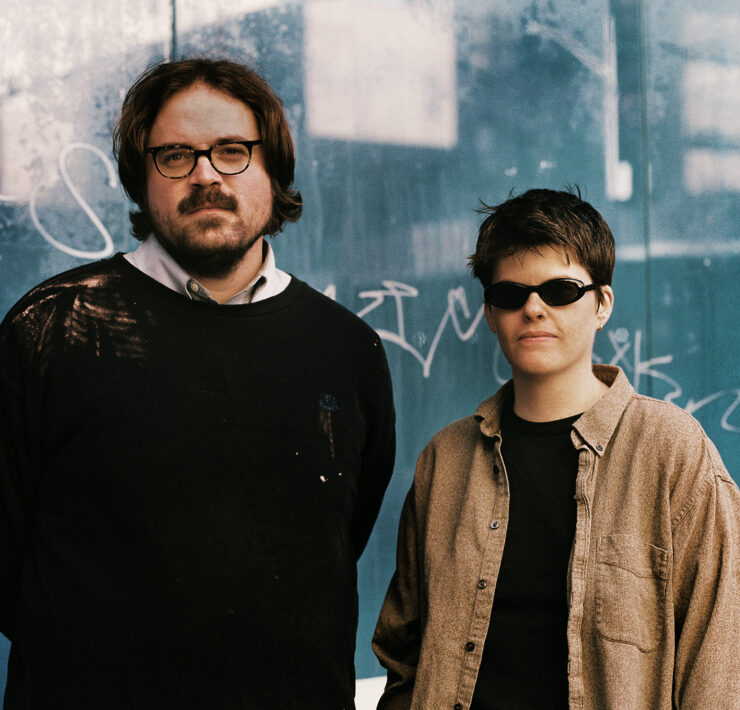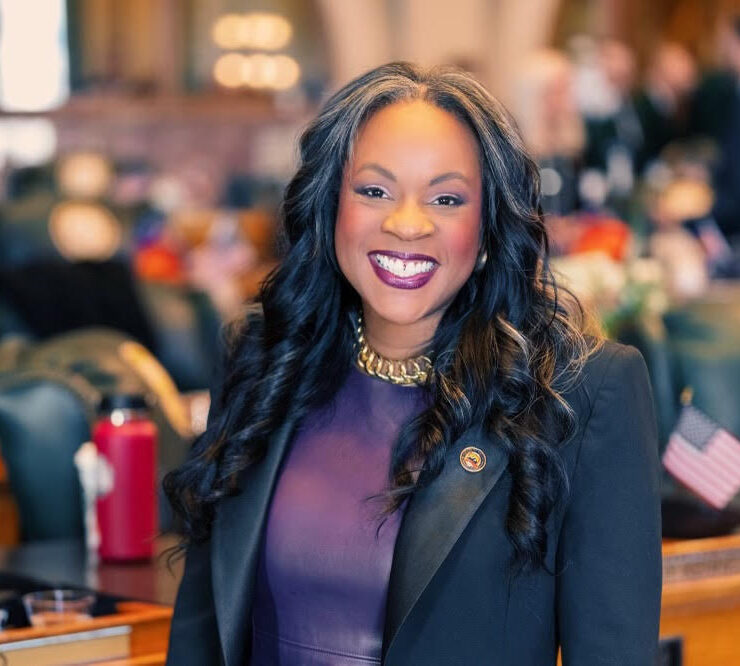Year in review: The top 10 news stories that made 2012
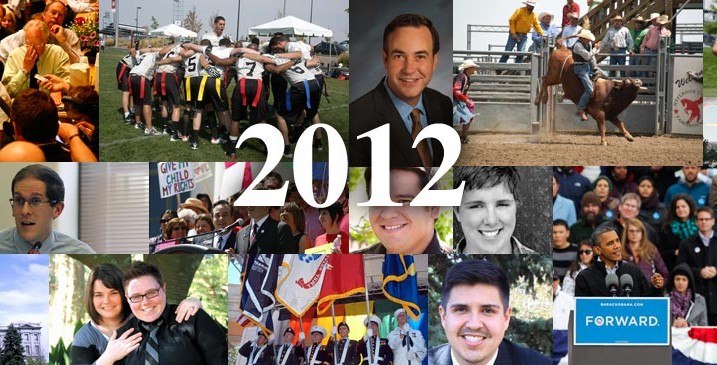
Out Front contributor Nic Garcia is a lifelong journalist and…
A simple principle we learn as children is cause and effect. This concept was in full force in 2012 when a setback for relationship recognition for Colorado’s same-sex couples at the General Assembly spurred momentum toward a November victory for the LGBT community. Beyond a historic election that effectively guarantees civil union legislation becoming law in 2013, this year will be remembered for advancements in protections for trans people, gay and lesbian employees in Pueblo, a continued legacy for multiple LGBT organizations and a new chapter for this very publication you hold in your hands.
1. Political meltdown over civil unions bill
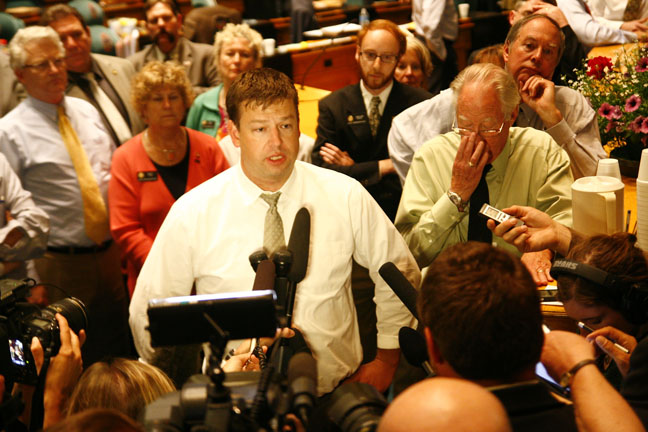
The Story:
- Civil unions bill passes Democratic-controlled state Senate, moves one step closer to showdown in GOP-controlled House
- House Judiciary Committee to determine fate of the Colorado Civil Unions Act
- Miracle: House committee approves civil unions bill after Rep. BJ Nikkel makes surprise switch to ‘yes’ vote
- Civil unions bill advances through House with bipartisan support, but will it beat the clock?
- Point of No Return: Civil unions bill in GOP leadership’s hands
- Civil unions bill dies on calendar after Speaker McNulty declares ‘impasse,’ refuses to allow bill to come up for vote
- GOP-controlled House committee kills civil unions bill – again
After the Colorado Civil Union Act of 2011 met a swift death in a House committee, advocates saw an opportunity arise for 2012 when rumor had it one Republican on the committee had misgivings about her “no” vote. That Republican was state Rep. B.J. Nikkel of Loveland.
Many careful behind-the-scenes conversations led to Nikkel changing her vote this year, opening a path to pass the bill through Colorado’s House of Representatives. Supporters were cautiously optimistic the bill would pass with bipartisan support. A deal was allegedly struck between bill sponsors state Sen. Pat Steadman and Rep. Mark Ferrandino, House GOP leadership who opposed the bill because of their conservative base, and Governor John Hickenlooper, a Democrat.
But as the days of the regular session dwindled and pressure to kill the bill mounted on Republican House Speaker Frank McNulty, Republicans did everything they could to run out the clock – to let the bill die without a vote. Despite Republican committee chairs burying the bill at the end of their agendas, the civil unions bill made it to the full floor of the House where there was enough bipartisan support to pass it. But the Republican majority had one last trick up their collective sleeve: To talk. And talk. And talk some more – about inconsequential bills and resolutions, running out the clock.
To cut off the Republican filibuster, Democrats attempted a procedural move with a few renigade Republicans that would reorder the agenda, moving the civil unions bill to the front. But before that vote was taken, Republican leadership declared the House in recess, where it remained until the clock ran out on the Colorado Civil Union Act and 30 other bills. McNulty, speaking to reporters, claimed an “impasse” had been reached. From the House gallery, civil union supporters chanted “shame on you.” The following day, Hickenlooper called for a special legislative session that would give House Republicans the time they claimed to need to properly debate the bill. Instead, this time Republicans rerouted the re-introduced bill to the state affairs committee, stacked with loyal conservatives who dutifully killed the bill there, setting in motion our next story.
2. Democrats take back Colorado’s House, number of LGBT state legislators doubles

The Story:
- Colorado Civil Unions supporters launch committee to win pro-LGBT state House majority
- Pro-civil unions committee Fight Back Colorado has already raised $55,000 to take McNulty’s speakership
- Fight Back Colorado has raised $59,000
- Fight Back Colorado targets vulnerable House Republicans who opposed civil unions
- Colorado has 8 out LGBT candidates for state legislature
Anger over the mishandling of the Colorado Civil Union Act turned into action, its supporters say. And while there’s no doubt an extra $300,000 that poured in from gay rights activists across the nation and from within Colorado helped boost Democratic candidates, a progressive coalition of social justice organizations, the Democratic Party and the Obama re-election campaign was prepared to help make Colorado a little more blue in 2012, and they did. Not only did Obama carry the state again – thanks in large parts to Latinos and women – but Democrats picked up nine seats in the state House, returning them to the strong majorities they’d held from 2005 to 2011. The Democrats also kept their majority in the state Senate. These victories have paved the way for civil union legislation to become a reality in 2013.
Among those voting for the Colorado Civil Union Act will be eight openly lesbian and gay lawmakers, their presence in the legislature doubling the previous record of four. Joining incumbent state Sens. Pat Steadman and Lucia Guzman from Denver, is Jessie Ulibarri from Adams County. And joining incumbent state Reps. Mark Ferrandino from Denver and Sue Schaffer from Wheat Ridge, are Dominick Moreno from Commerce City, Joann Ginal from Fort Collins and Paul Rosenthal from Denver.
3. Historic gay vs. gay race for Colorado state senate seat
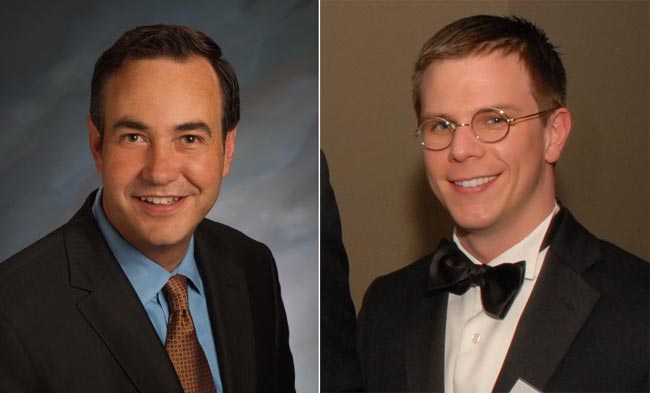
The Story:
- GOP replacement committee could appoint out gay Republican Michael Carr to face off against out Denver Democrat Sen. Pat Steadman
- Gay vs. Gay in Colorado state Senate race
- Steadman expects to be re-elected, plans for 2013
- Steadman mourns loss of partner Dave Misner, vows to fight for civil unions in 2013
In any election, Michael Carr’s candidacy for Colorado’s senate would have been notable – Carr, an openly-gay man, was a surprising Republican nominee for a Colorado legislative seat. But the race for Senate District 31 was historic from the fact that his Democratic opponent, incumbent Sen. Pat Steadman. Never have two gay men from opposite sides of the aisle ran against each other for the same seat at the Colorado General Assembly.
Steadman, as expected, won the heavily-Democratic Denver seat with more than 70 percent of the vote. But Carr isn’t leaving empty-handed. The GOP is in need of a makeover, Carr is young, has ties to the national Log Cabin Republican organization and won some national attention, even if his bid was washed over by a sea of Presidential election news. Carr is poised to play an important role in re-making the Republican party. Moreover, Carr is in the middle of a lawsuit with the City of Denver over a campaign sign he hung on his front porch. Carr claims limiting how large a campaign sign, as the City currently does, is limiting free speech.
4. Marriage equality makes historic gains

The Story:
- History made: President Obama announces support for same-sex marriage
- Nov. 6 election scores historic wins for marriage equality, LGBT rights
- Supreme Court to hear same-sex marriage cases for the first time
Election night didn’t just pave the way for civil unions to become a reality in Colorado – the number of states that offer marriage to same-sex partners grew in a historic landslide. Voters in Washington, Maryland and Maine made history as the first states to ever approve of marriage equality at the ballot box. Meanwhile, voters in Minnesota stiffed an amendment to that state’s constitution defining marriage between a man and a woman. A calculated coalition of local and national LGBT nonprofits and activists worked diligently in each state to change the course of history, and with a little help from President Barack Obama, the first sitting U.S. president to endorse same-sex marriage, they were successful. If we were wearing rose-colored glasses, we could say 2012 was the beginning of the beginning of a new chapter for marriage equality as the United States Supreme Court has agreed to hear arguments in two cases regarding the matter.
5. Denver sheriff adopts new precedent-setting trans policies

Advances for LGBT equality in 2012 extend beyond gay and lesbian couples. In June, the Denver Sheriff Department announced new trans policies – some of the most progressive in the nation – would be implemented. The policies, a collaboration between The GLBT Community Center, the Denver chapter of the ACLU and the sheriff’s deparment outlined how trans people are to be treated from transport to booking and housing.
6. Pueblo extends partner benefits to same-sex couples

The Story:
- Pueblo city council punts on same-sex partner benefits
- @nicgarcia: Doomed to repeat history in Pueblo
- Pueblo City Council president: Same-sex partner benefits will pass
One hundred miles south of the civil union debate in Denver, Pueblo’s LGBT community had their own battle on their hands. While the city has long had a nondiscrimination policy protecting the LGBT employees, it had yet to extend partner benefits to same-sex partners of city employees. A coalition, Pueblo Equality, sought to correct that by working with councilmembers and their staff. They drafted a policy and worked for council for votes. With victory in their sights, the community was rocked when a council member tabled the measure at the eleventh hour.
In the end, it appears the setback boiled down to a rookie mistake and miscommunication. The ordinance was passed about a month later. A group of conservatives attempted to collect enough signatures to force a repeal of the policy, but failed to do so. The ordinance stands, and gay and lesbian city employees are now that much more equal.
7. Denver hosts national LGBT events

2012 wasn’t all fun and games, but two weekends in Denver were just that – when Denver hosted major LGBT events – the 2012 Gay Bowl and GALA Festival. In July, LGBT choirs from across the nation took over the Denver Center of Performing Arts Complex for a week of glee. Thousands participated in the quadrennial GALA Festival. In September, hundreds of gay and – for the first time – lesbian flag football players flew to the Mile High City to decide who was the best of the best in the nation. Denver’s Gay and Lesbian Flag Football League and The Denver Summit hosted the weekend of touchdowns at Dick’s Sporting Goods Park. Denver’s team 303 took the first national women’s title.
8. Colorado groups push comprehensive focus on LGBT health care

For the first time since the AIDS epidemic shook the LGBT community to its core, a concerted effort in understanding challenges was undertaken by various organizations across the nation and locally. The state health department led the LGBT Health Outcomes Planning Project and was funded by the U.S. Department of Health and Human Services, Out Front reported in June. Colorado joined a handful of other states in undertaking the comprehensive study approach. The study yielded four goals: increase services, build community awareness, address policy and improve research about LGBT health outcomes.
9. Local LGBT organizations celebrate anniversaries, expand
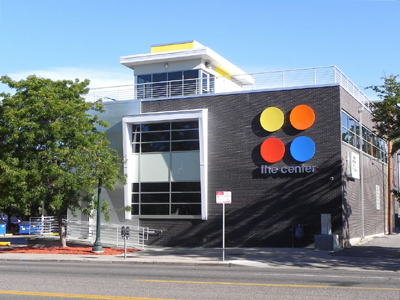
2012 was another year of service for organizations with long traditions in Denver and Colorado. But for us, one anniversary stood out – the 30th anniversary of the Colorado Gay Rodeo Association. CGRA has been building community between rural cowboys and city slickers for three decades and is one of the oldest continually operated nonprofits in our community. CGRA also hosts the oldest continually operated gay rodeo in the world. This year, hundreds of cowboys and cowgirls gathered at the Jefferson County Fairgrounds to celebrate and help CGRA come this much closer to raising $30,000 to donate back to community organizations. And while CGRA was continuing its tradition, another pillar of the community was expanding north. This year, The Center officially took over providing and expanding services for Northern Colorado, including re-establishing its Pride celebration. Hundreds gathered in Fort Collin’s Civic Center Park to mark a new era for the LGBT northern Colorado community.
10. Act III, Out Front’s new chapter

The issue of Out Front you hold in your hands almost didn’t happen. That’s because, a year ago, Out Front almost closed. The staff had been dismissed, the office’s cleaned, the lights turned off. Yet through a series of unlikely “accidents,” Out Front found new owners, Jerry Cunningham and JC McDonald. Publishing immediately resumed in late January with some familiar faces, but through the course of the year Out Front continued to evolve. We look back at 2012 with a new look in print and online, the birth of the Power Party and the largest Pride issue since the start of the 2008 recession. While the mission of Out Front has been refined, the same is true as it was more than 37 years ago when Phil Price founded this institution: There’s no turning back
What's Your Reaction?
Out Front contributor Nic Garcia is a lifelong journalist and works for Colorado education policy news organization EdNewsColorado. He was an Out Front managing editor, associate publisher and executive editor from 2011 to 2013.



